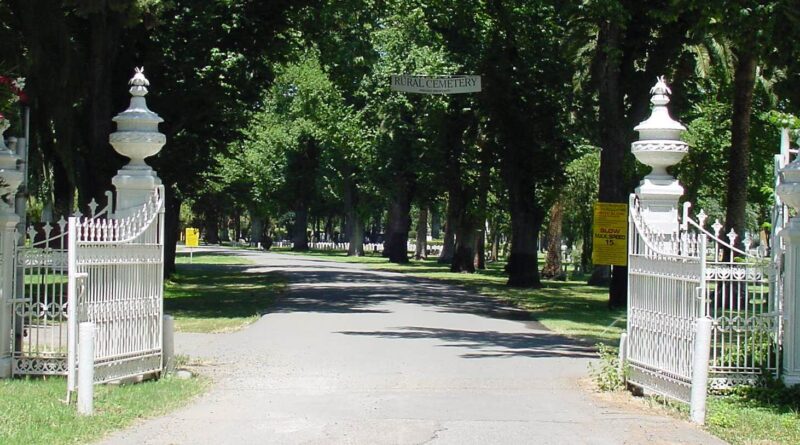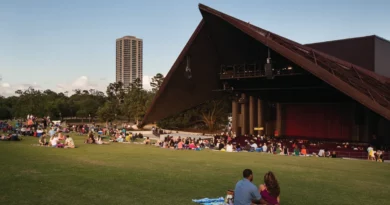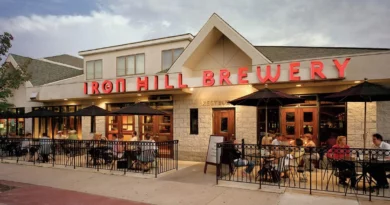Stockton Rural Cemetery in Stockton California
Stockton Rural Cemetery, one of the oldest cemeteries in California, is a place where history, memory, and community come together. Established in 1861, this historic cemetery is the final resting place for many of Stockton’s most prominent citizens, including pioneers, Civil War veterans, and influential figures who shaped the city’s development. The cemetery’s beautifully landscaped grounds, with their mature trees, winding paths, and historic monuments, offer a peaceful and reflective environment for visitors.
In this article, we’ll explore the history, significance, and notable burials at Stockton Rural Cemetery, and why it remains a vital part of Stockton’s heritage today.
The Founding of Stockton Rural Cemetery
Stockton Rural Cemetery was established in 1861, during a time when the concept of the “rural cemetery” was gaining popularity across the United States. Unlike earlier burial grounds, which were often small, crowded, and located within city limits, rural cemeteries were designed as landscaped parks, offering a serene and picturesque setting for the departed. These cemeteries also served as public spaces where people could visit, reflect, and enjoy the natural surroundings.
The founding of Stockton Rural Cemetery was led by a group of local citizens who recognized the need for a proper burial ground that would serve the growing community. The cemetery was established on a 40-acre plot of land just outside the city limits, chosen for its peaceful setting and natural beauty. Over the years, the cemetery has expanded to cover more than 100 acres, becoming the final resting place for tens of thousands of individuals.
The Cemetery’s Early Years
In its early years, Stockton Rural Cemetery quickly became the burial site of choice for many of Stockton’s leading citizens. The cemetery’s founders were committed to creating a space that honored the dead while also serving as a place of beauty and tranquility for the living. They hired landscape architects to design the cemetery’s layout, incorporating winding paths, mature trees, and carefully placed monuments.
The first burials at the cemetery included some of Stockton’s early pioneers, many of whom had played a key role in the city’s founding and development. These individuals were often interred in family plots, with elaborate headstones and monuments marking their graves. As the cemetery grew, it became a reflection of Stockton’s social and economic history, with graves representing a cross-section of the community, from wealthy landowners to working-class families.
Notable Figures Buried at Stockton Rural Cemetery
Stockton Rural Cemetery is the final resting place for many notable figures who contributed to the city’s history and development. Among the most prominent individuals buried here are:
- Benjamin Holt: An inventor and industrialist, Holt is best known for developing the first successful track-type tractor, which laid the foundation for modern agricultural and construction equipment. His invention led to the creation of the Caterpillar Tractor Company, one of the world’s leading manufacturers of heavy machinery.
- Charles Maria Weber: The founder of Stockton, Charles Maria Weber played a crucial role in the city’s early development. Born in Germany, Weber immigrated to the United States in the 1830s and eventually settled in California. In 1849, he established the city of Stockton on land he had acquired through a Mexican land grant.
- Amos Alonzo Stagg: A pioneering figure in American sports, Stagg was a coach and athletic director who made significant contributions to the development of football, basketball, and other collegiate sports. He served as the athletic director at the University of the Pacific and is buried alongside his wife in Stockton Rural Cemetery.
- Robert F. Stockton: Although not buried in Stockton Rural Cemetery, the city of Stockton was named after Robert F. Stockton, a U.S. Navy commodore who played a key role in the Mexican-American War. Several of his descendants are interred in the cemetery.
Civil War Veterans and Military History
Stockton Rural Cemetery is home to the graves of many Civil War veterans, reflecting Stockton’s role in the conflict and its aftermath. The cemetery’s military section features rows of headstones marking the graves of soldiers who fought for the Union during the Civil War. Many of these veterans were members of the Grand Army of the Republic (GAR), a fraternal organization for Union veterans.
The cemetery also contains the graves of veterans from other American conflicts, including the Spanish-American War, World War I, World War II, the Korean War, and the Vietnam War. Memorials and monuments throughout the cemetery honor the service and sacrifice of these individuals, making Stockton Rural Cemetery a place of deep historical significance.
Historic Monuments and Memorials
Stockton Rural Cemetery is known for its historic monuments and memorials, many of which were erected in the late 19th and early 20th centuries. These monuments range from simple headstones to elaborate statues and mausoleums, reflecting the diverse backgrounds and social status of the individuals buried there.
One of the most notable monuments in the cemetery is the McKee Memorial Fountain, a beautiful marble fountain dedicated to the memory of James and Mary McKee, early pioneers of Stockton. The fountain is a popular feature of the cemetery, symbolizing the enduring legacy of Stockton’s founding families.
Another significant monument is the Soldiers’ Monument, which honors the Civil War veterans buried in the cemetery. The monument, which features a statue of a Union soldier, was erected by the local chapter of the GAR and serves as a focal point for Memorial Day ceremonies and other military commemorations.
The Role of the Cemetery in Stockton’s History
Stockton Rural Cemetery has played a central role in the history of Stockton, serving as a final resting place for generations of the city’s residents. The cemetery’s graves and monuments tell the story of Stockton’s growth from a small frontier settlement to a thriving urban center, reflecting the social, economic, and cultural changes that have shaped the city over the past century and a half.
The cemetery is also a reflection of Stockton’s diverse population, with graves representing a wide range of ethnic and cultural backgrounds. Over the years, the cemetery has become a place where the community comes together to honor its past, celebrate its diversity, and remember those who have contributed to the city’s development.
Preservation Efforts and Challenges
Like many historic cemeteries, Stockton Rural Cemetery has faced challenges related to preservation and maintenance. The cemetery’s age, coupled with the effects of weather, vandalism, and neglect, has led to the deterioration of some graves and monuments. In recent years, however, efforts have been made to preserve and restore the cemetery’s historic features.
Local organizations, including the Stockton Rural Cemetery Association, have taken an active role in preserving the cemetery’s history and ensuring that it remains a place of beauty and reverence. These efforts include fundraising for restoration projects, organizing volunteer clean-up days, and promoting awareness of the cemetery’s historical significance.
Visiting Stockton Rural Cemetery
Stockton Rural Cemetery is open to the public and welcomes visitors who wish to explore its historic grounds, pay their respects to the deceased, or simply enjoy a peaceful walk in a serene environment. The cemetery’s layout, with its winding paths and mature trees, makes it a pleasant place to visit, whether for a brief visit or a longer, more contemplative stroll.
Visitors are encouraged to take their time exploring the cemetery, as there are many interesting graves, monuments, and memorials to discover. Maps and informational brochures are available at the cemetery office, providing visitors with helpful guidance on navigating the grounds and locating notable graves.
Cemetery Tours and Educational Programs
For those interested in learning more about the history of Stockton Rural Cemetery and the individuals buried there, guided tours and educational programs are available. These tours, led by knowledgeable guides, offer in-depth insights into the cemetery’s history, architecture, and notable burials. Special tours are often organized around significant dates, such as Memorial Day or the anniversary of the cemetery’s founding.
In addition to guided tours, the cemetery also hosts educational programs for schools, community groups, and historical societies. These programs provide an opportunity for participants to learn about the history of Stockton and the role of the cemetery in preserving the city’s heritage.
Why Stockton Rural Cemetery Is a Must-Visit Historical Site
Stockton Rural Cemetery is more than just a burial ground; it is a living testament to the history and heritage of Stockton, California. The cemetery’s historic monuments, notable burials, and peaceful setting make it a place of reflection and reverence, as well as a valuable resource for those interested in local history.
Visiting Stockton Rural Cemetery offers a unique opportunity to connect with the past, explore the stories of those who helped shape Stockton, and appreciate the beauty of a well-preserved historic site. Whether you are a history enthusiast, a genealogist, or simply someone who enjoys exploring historic landmarks, Stockton Rural Cemetery is a must-visit destination that offers a rich and rewarding experience.
Discover more from City Towner
Subscribe to get the latest posts sent to your email.




